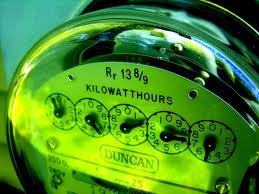

A residential electricity demand response trial conducted by Australian utility United Energy has resulted in a more than 30 per cent load reduction for peak events occurring during the 2016 summer season in Australia, the network operator said.
The trial – which targeted peak usage from 4pm-7pm over four events during the 2015/16 summer season – was conducted via an a energy management program and app developed by California-based start-up Bidgley.
Bidgley’s Action DR program, delivered to the customer via an app called HomeBeat, used historic energy use data to provide each participating household with a personal energy use goal for the peak event period, providing real-time updates on how well they are meeting it.
Customers also receive targeted energy saving tips, as well as performance-based rewards for changes in energy consumption behaviour.
In United Energy’s case, the customers invited to participate in the voluntary Summer Saver Trial were asked to reduce their power usage for a period of up to three hours per event.
‘Event days’ were on weekdays only, and participants were given at least two days notice of an upcoming event day.
In return, customers had the opportunity to be rewarded with $25 for each ‘event day’ – as much as $100 over the season – where they reduceed their energy consumption in comparison to a similar day in their history.
United Energy said on Tuesday that the trial had successfully averaged more than 30 per cent load reduction over the four peak events, while also improving customer engagement and satisfaction.
In a joint press release with Bidgley, UE said it chose the US company’s residential demand-response solution for its ability to engage customers, and for being scalable and cost effective to implement.
Bidgely CEO Abhay Gupta says his company’s solution is “disaggregation technology at its core.”
“ActionDR gives utilities the ability to achieve high peak shift results without the capital cost of installing a load control switch,” Gupta said.
“This not only reduces the cost of residential demand response by over five times, but also allows scalable deployment, thus enabling utilities to greatly extend their demand response program reach compared to traditional methods.”
This article was originally published on RenewEconomy sister site One Step Off The Grid. To sign up for the weekly newsletter click here.
Andrew Forrest's Fortescue starts work on new solar project as it charges towards "real zero",…
Large scale and rooftop solar are the most popular energy choices for Australians, although climate…
A major, unprecedented blackout has hit Spain and Portugal - and within hours, anti-renewable disinformation…
People movements at Watson Advisory, SEC, Facet, Blueleaf Energy, Rio Tinto, Neoen, CS Energy, Net…
Storage startup MGA Thermal is back on track and looking for capital to expand, after…
New research identifies electorate of New England as the most valuable patch of land in…